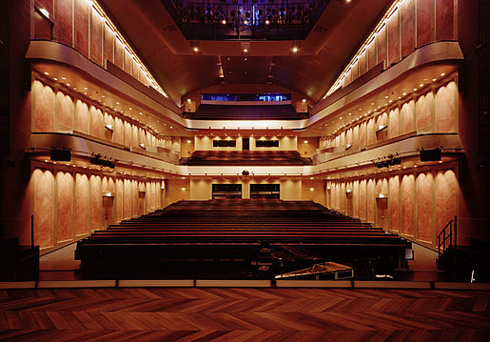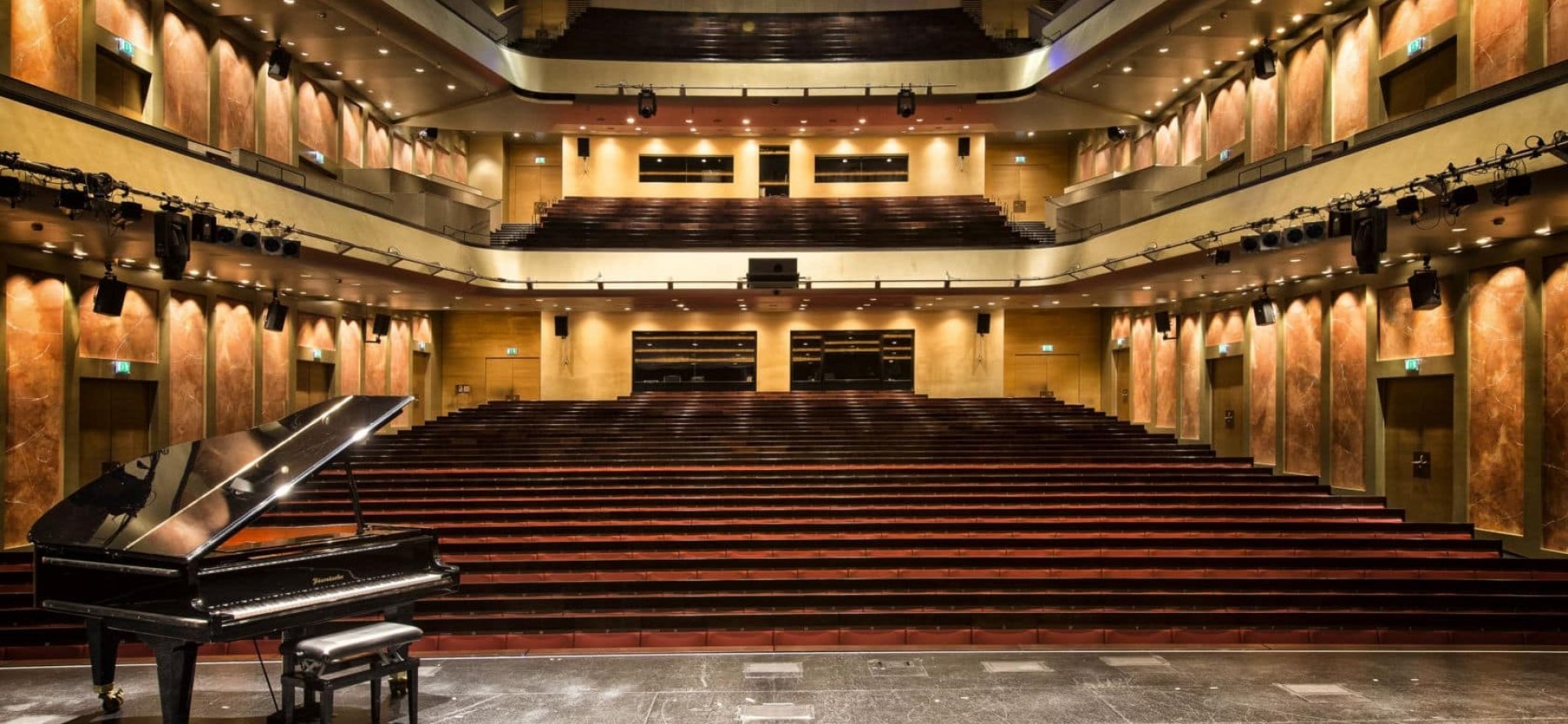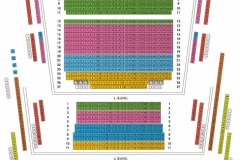Mithridates, King of Pontus
August 2025 | ||||||
|---|---|---|---|---|---|---|
Mo | Tu | We | Th | Fr | Sa | Su |
Mithridates, King of Pontus - Wolfgang Amadeus Mozart (1756 - 1791)
Opera seria in three acts K. 87 (1770)
Libretto by Vittorio Amedeo Cigna-Santi
after Jean Racines’s tragedy Mithridate
in the Italian translation by Giuseppe Parini
Semi-staged performance
Sung in Italian with German and English surtitles
Synopsis
Place: around the Crimean port of Nymphæum
Time: 63BC during the conflict between Rome and Pontus
Prologue
Mitridate, having suffered a heavy defeat in battle, is presumed dead. This incorrect news is passed by Arbate, the Governor, to Aspasia (Mitridate's fiancée) and to Farnace and Sifare (Mitridate's sons).
Act 1
Scene 1
Arbate, the governor of Nymphæum, welcomes Sifare. We learn that Sifare resents his brother, Farnace, because of his brother’s strong ties with their enemies, the Romans. Arbate pledges his loyalty to Sifare. Aspasia pleads for Sifare to help her against advances by Farnace. He accepts her plea and reveals his love for her.
Scene 2
Farnace makes his advances to Aspasia. She refuses, supported by Sifare, who protects her from his forceful brother. News arrives that Mitridate is alive and is approaching the city. Arbate urges the brothers to conceal their differences and greet their father. The brothers agree to hide their feelings for Aspasia. Farnace conspires with Marzio, Roman legionary officer, against Mitridate.
Scene 3
Mitridate arrives on the shores of Nymphæaum with Princess Ismene, daughter of his ally the King of Parthia. Mitridate wants Farnace to marry Ismene, his promised bride. Ismene is in love with Farnace but senses problems and is worried about her future. Arbate tells Mitridate that Farnace is pursuing Aspasia, not mentioning Sifare. The jealous Mitridate swears revenge on Farnace.
Act 2
Scene 1
Farnace scorns and threatens Ismene. She tells Mitridate, who suggests that she should marry Sifare. Mitridate asks Aspasia for immediate marriage but she hesitates, proving to him that she is unfaithful. Aspasia confesses love to Sifare but they both agree to part to save their honour. Sifare plans to leave and Aspasia is troubled by the conflict between love and duty.
Scene 2
Mitridate is aware of Farnace's plot against him with the Romans; he plans his revenge, despite Marzio’s offer of peace, and arrests Farnace to execute him. Ismene rescues the prince, who admits his treachery but implicates Sifare. Mitridate tricks Aspasia into admitting her love for Sifare and swears revenge. Aspasia and Sifare wish to die together, in fear of Mitridate’s threats.
Act 3
Scene 1
Ismene, still in love with Farnace, tries to convince Mitridate to forgive Aspasia. The Romans attack and Mitridate leaves for battle. Aspasia contemplates suicide by poison. Sifare also wants to die, and joins his father in the battle.
Scene 2
Marzio liberates Farnace and promises him the rule of Nymphæum. Farnace changes his mind, deciding to side with Mitridate.
Scene 3
Defeated, Mitridate commits suicide, avoiding captivity. Before he dies he gives his blessing to Sifare and Aspasia and forgives Farnace, who now agrees to marry Ismene. All four pledge to free the world from Rome.
Program and cast
Adam Fischer - Musical Direction
Birgit Kajtna-Wönig - Stage Setting
Cast
Pene Pati: Mithridates
Sara Blanch: Aspasia
Elsa Dreisig: Sifare
Paul-Antoine Bénos-Djian: Farnace
Julie Roset: Ismene
Mozarteumorchester Salzburg
House for Mozart

When it became clear that the ambitious plans to build a festival stage in Hellbrunn could not be realised, the idea was born of transforming parts of the court stables into a theatre. After a building period lasting only four months a provisional festival hall was built on the grounds of the large winter riding school in 1925 which was opened with Das Salzburger Grosse Welttheater. Only one year later, in 1926, the architect Clemens Holzmeister supervised a first phase of re-building of the inadequate provisional festival hall. Adaptations were again made in 1927 so that operas could be performed: Beethoven’s Fidelio was the first opera to be performed here.
The building was known as the Kleines Festspielhaus, and underwent several more reconstruction phases: in 1937 the auditorium was turned around by 180° which meant that it was necessary to build on a fly tower for the backstage area. In order to make this possible, the then governor of Salzburg, Franz Rehrl, allowed his birthplace in the Toscanini courtyard to be pulled down. Benno von Arent redesigned the festival hall in 1939 and replaced the wooden panelling with stucco work ornamented in gold. The unsatisfactory sight lines and acoustic problems made a further conversion necessary in the years 1962/63. The Salzburg architects Hans Hofmann and Erich Engels gave the hall the form it had until 2004.
For many years the Salzburg Festival had followed plans to create a “House for Mozart” which would in every respect be suitable for the performance of the composer’s stage works, with excellent acoustics and the best possible sight lines from all seats. The auditorium had to be both intimate but also have sufficient seating capacity. The task that seemed like squaring the circle was achieved by the team of architects Holzbauer and Valentiny: what was previously known as the Kleines Festspielhaus was transformed in three building phases from September 2003 into a Haus für Mozart (House for Mozart). The auditorium of the Kleines Festspielhaus was widened, shortened and lowered. Two new audience circles were created which extend on both sides of the hall as far as the stage. This creates the effect that the stage is framed on three sides by people in festive mood rather than by bare walls.
In comparison with the previous situation in the Kleines Festspielhaus the foyers have undergone major changes. Tall windows extending over two floors offer views from the main foyer to the city, and in the evenings the lighted interior of the theatre creates an inviting impression. The main foyer is dominated by a 17-metre high gilded lamella wall; through the openings a profile of Mozart’s head made of Swarovski crystal can be seen. The terrace above the hall construction had never been accessible to the public since its construction in 1924; now, with the new design, it has become part of the interval foyer. The arcade below is made predominantly of glass and means that the auditorium opens out on two sides instead of only one, as was the previous situation. Thus people can step out directly from the festival hall into the magnificent urban surroundings.
The festival lounge on the roof, the SalzburgKulisse, has become a great attraction (made possible by Gerhard Andlinger). The name in itself already suggests the splendid view offered from there to the old town centre of Salzburg. This lounge is furnished with pear-wood panelling; the tapestries in the alcoves are by Anton Kolig, a contemporary of Anton Faistauer.
The Faistauer Foyer has become a jewel of the new house (made possible by Herbert Batliner): the famous frescoes in this hall, which were created by the Salzburg painter Anton Faistauer in 1926, were removed after the Nazis marched into Austria and some of them were deliberately destroyed. Not until 1956 was it possible to re-mount them. For the opening of the Haus für Mozart they were thoroughly restored, and architecturally the foyer has been returned to its original historic design.
As regards the exterior façade the proportions of the Holzmeister ensemble from the years 1924/37 have been retained. The visual impression of the façade is characterised by the prestigious doors opening out onto the terrace which were designed by the sculptor Josef Zenzmaier: he created three bronze reliefs which are mounted above the portals and depict scenes from Mozart’s Le nozze di Figaro, Don Giovanni and Die Zauberflöte. The stone masks by Jakob Adlhart are now clearly visible above the entrance to the house: this is under the new extensive concrete roof decorated in gold leaf. Throughout the entire building rough concrete surfaces are contrasted with fine gold leaf, thus creating aesthetic tension.
From the backstage area a huge iron door opens onto the Toscanini courtyard. The six concrete reliefs mounted to the left and right Genies holding Masks were removed in 1938 but reconstructed again in 1979 by their creator Jakob Adlhart. Above them is an organ which was played for performances of Jedermann when they had to be transferred from the Domplatz to the Festspielhaus due to bad weather.
For the celebrations for Mozart’s 250th birthday in Mozart Year 2006 the Haus für Mozart was opened with the premiere of Le nozze di Figaro (conductor: Nikolaus Harnoncourt, stage director: Claus Guth).

 EN
EN DE
DE IT
IT FR
FR ES
ES RU
RU JP
JP RO
RO
 Seating plan
Seating plan